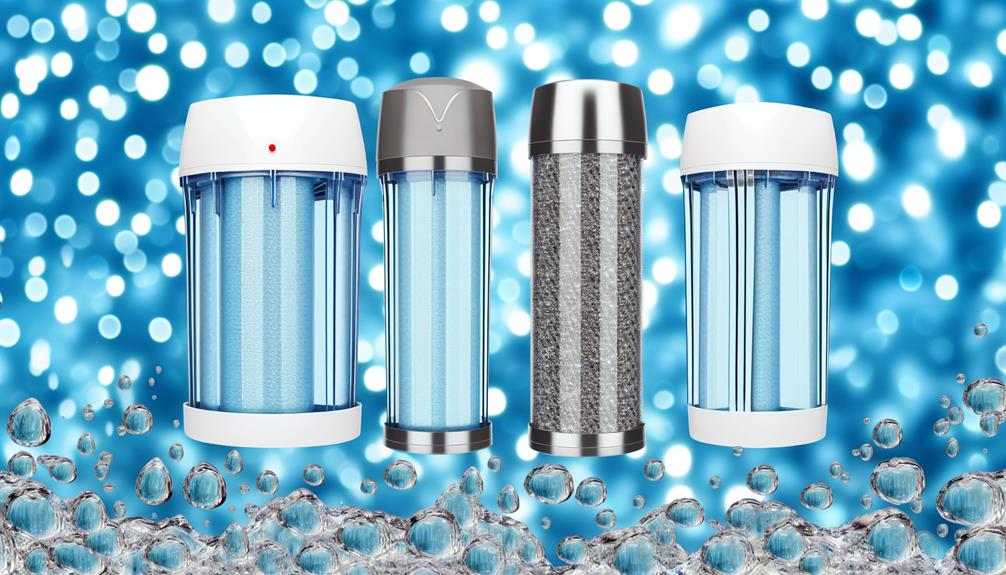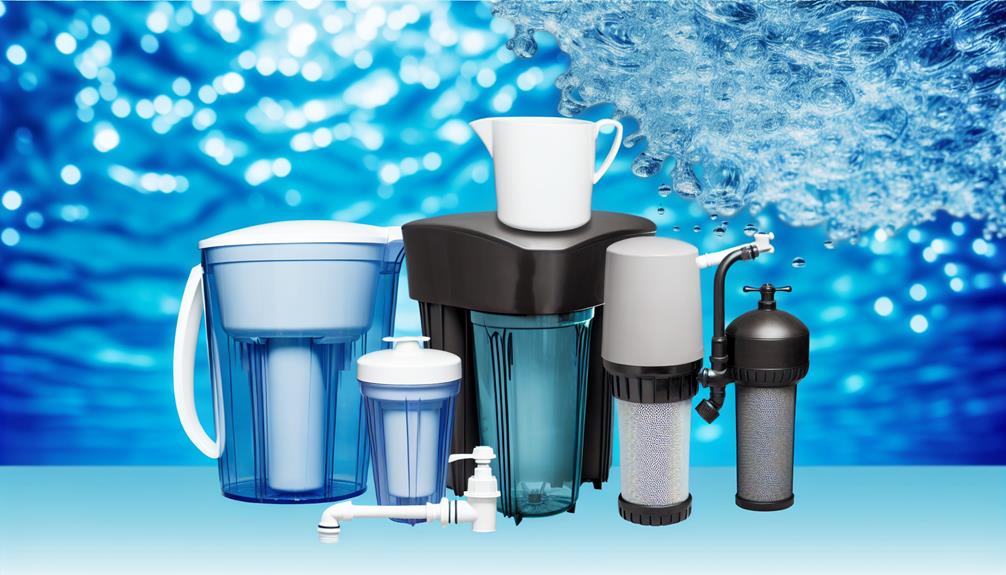As you navigate the murky waters of daily challenges, consider the purity of your drinking water, a vital source that can harbor unseen dangers like arsenic.
Recently, the veil has been lifted on innovative, budget-friendly solutions for arsenic water filtration, courtesy of UNESCO's latest technology. This new system, which employs iron oxide coated sand, stands as a beacon of hope for communities where arsenic-contaminated water is a pressing health concern.
It's a breakthrough that not only promises to quench thirst but to do so without the sting of high costs and complexity. You might find yourself pondering the implications of such a development—how it could reshape the landscape of public health and whether it truly holds water when pitted against the existing methods that weigh heavily on limited resources.
Let's explore the depths of this advancement and its potential ripple effect on communities around the globe.
Arsenic Risks Explained
Understanding the dangers of arsenic in your drinking water is crucial, as chronic exposure can lead to severe health issues, including cancer, cardiovascular diseases, and neurological problems. The Environmental Protection Agency (EPA) aligns with the World Health Organization's (WHO) benchmark, setting the maximum contaminant level for arsenic in drinking water at 0.01 milligrams per liter to mitigate these risks.
Globally, arsenic contamination remains a critical concern, particularly in regions where groundwater arsenic levels exceed this threshold significantly. In Bangladesh, for instance, concentrations have been detected at a staggering 1.8 milligrams per liter—180 times higher than the recommended safe limit. Such acute contamination underscores the urgent need for effective filtration solutions.
The absence of medical treatments for arsenic poisoning amplifies the importance of preventive measures. It's imperative to understand that the only shield against the toxic effects of arsenic is its elimination from water before consumption. The UNESCO-developed filtration technology, utilizing the adsorptive properties of iron oxide coated sand, offers a tangible and low-cost method to reduce arsenic levels in drinking water, thereby preventing its detrimental health outcomes.
Testing Water for Arsenic
To ensure your water is safe from arsenic contamination, you'll need to perform tests using either at-home kits with color-changing strips or by sending samples to a certified laboratory for detailed analysis. At-home kits offer a quick preliminary assessment of arsenic concentration, but they mightn't be as precise as laboratory tests.
Here's why you can't afford to skip testing water for arsenic:
- Health Protection: Long-term exposure to arsenic in water can lead to serious health issues, including cancer. Early detection through testing can save you and your loved ones from potentially life-threatening conditions.
- Regulatory Compliance: In the United States, the Environmental Protection Agency (EPA) sets the arsenic standard for safe drinking water at 10 parts per billion (ppb). Testing ensures that your water complies with these regulations.
- Peace of Mind: Knowing the exact arsenic concentration in your water can provide you with the confidence that you're drinking and using safe water.
Accurate testing is critical to determine the appropriate filtration solution. While options like reverse osmosis systems effectively reduce arsenic levels, without knowing your water's specific arsenic concentration, you might invest in a system that's either overkill or insufficient. Therefore, invest the time and resources to test your water; it's a crucial step in safeguarding your health.
Arsenic Source Prevention
Preventing arsenic contamination at its source is essential, as no medical treatment exists for arsenic-induced health issues, and mitigation efforts focus on removing the toxin from water supplies before use. Arsenic can enter water sources naturally or through industrial processes like mining or coal-burning, which complicates prevention strategies. You're facing a dual challenge: identifying potential arsenic sources and implementing measures to prevent contamination.
To tackle this, you'll need to understand where arsenic risks are highest and engage in rigorous monitoring of water sources. Iron oxide coated sand technology has emerged as a low-cost, effective method for removing arsenic from water. This water filter innovation, developed by UNESCO, offers a practical remedy, especially in rural areas with limited resources. Its success in Bangladesh exemplifies a sustainable solution that doesn't necessitate frequent replacement, underlining both efficacy and longevity.
Supporting the distribution of such low-cost water filters is a direct action towards source prevention. By providing communities with the means to filter arsenic from their water, you're also contributing to UNESCO's goals and the UN's Sustainable Development Goal of clean water access. It's a strategy that doesn't just react to contamination but actively seeks to prevent it.
Affordable Filtration Systems
Harnessing recycled iron oxide coated sand, affordable filtration systems offer a cost-effective and sustainable approach to removing arsenic from drinking water, particularly in resource-limited settings. These water filters, designed to remove toxic contaminants, are a beacon of hope for communities facing the silent threat of arsenic exposure.
Constructed with locally sourced materials, the filters provide a pragmatic solution, ensuring that the technology isn't only accessible but also supports local economies. The simplicity of the design, requiring no electricity, aligns with the needs of rural areas where power is often scarce or unreliable. The remarkable longevity of the filters, demonstrated in Bangladesh, underscores the durability and effectiveness of this water filtration technology.
Consider these compelling facts:
- Over 18 months of use – 12 out of 14 filters continued to produce safe, arsenic-free water, underscoring the reliability and low maintenance of the system.
- 100 liters daily – A single family filter can meet the drinking water needs of approximately 20 people, showcasing the impressive capacity and efficiency of these systems.
- UNESCO & UN-aligned – The distribution of these filters supports global initiatives for clean water access, directly contributing to the health and well-being of communities.
Pitcher Filter Effectiveness
Often overlooked, tabletop water pitcher filters like ZeroWater® provide an effective and user-friendly means to significantly reduce arsenic levels in drinking water. Your concern about contaminants can be substantially alleviated as you leverage these filters to remove arsenic efficiently. Analyzing their performance, it's notable that ZeroWater® can lower arsenic concentrations from an alarming 1000 μg/L to a mere 3 μg/L. This dramatic reduction not only meets but surpasses the Maximum Contaminant Level (MCL) standards established by the EPA.
The pitcher filter effectiveness lies in its design, which caters to the needs of households looking for a cost-effective and accessible solution. The filters' ability to serve as a short-term defense against arsenic contamination makes them a practical and immediate safeguard. They stand out as a convenient and affordable option, without compromising on performance.
As you consider the long-term implications of arsenic in your water supply, these tabletop water pitcher filters present a sustainable and efficient approach to water filtration. Their potential to mitigate arsenic contamination issues in well water is a testament to their utility. By integrating such water filters into your daily routine, you're taking a decisive step towards protecting your household from the harmful effects of arsenic.

